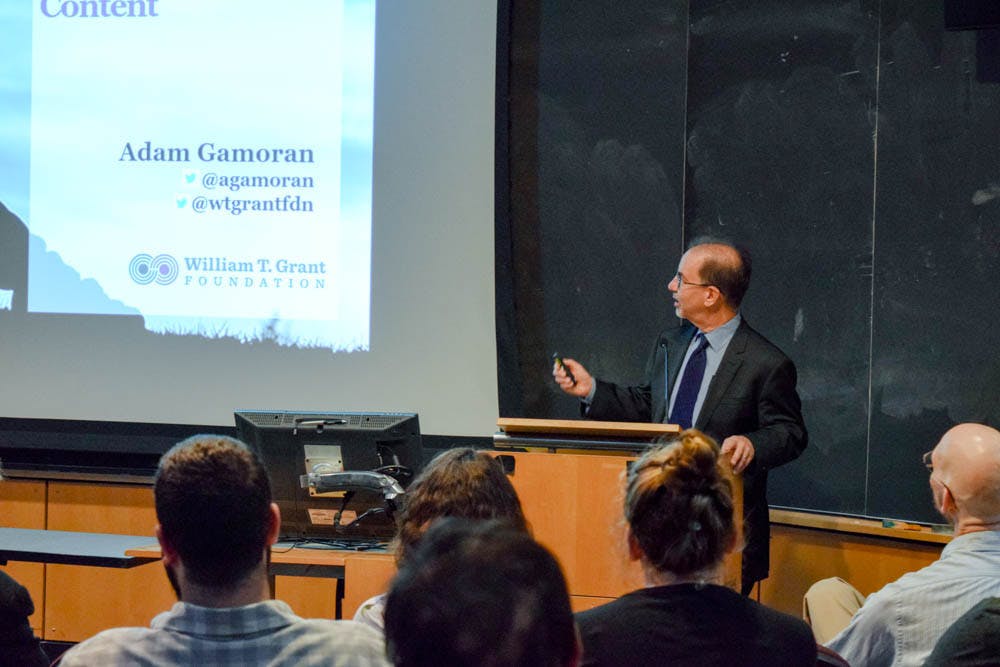The percentage of English language learners in American public schools has increased in all but 15 states since 2004. When the 2014 school year began, at least 10 percent of K-12 students in nine states were English language learners, according to the National Center for Education Statistics.The programs available to these students vary widely, said sociologist Adam Gamoran, president of the William T. Grant Foundation. Gamoran lectured on Oct. 25 as part of the Department of Education’s Speaker Series.
English language instructors vary widely in their strategies, Gamoran told The Herald. “There may be different approaches taken within the same state, within the same school district and even within the same school.”
The William T. Grant Foundation investigates both solutions to inequality in youth educational outcomes and how to better use research to influence policy, Gamoran said. His lecture described the Foundation’s goals and grant programs, using English language learning as a case study for the type of inequality the Foundation aims to reduce.
Recent increases in anti-immigrant rhetoric and crime make research dedicated to immigrant youth all the more pressing, Gamoran said.
“It has become even more urgent to find educational approaches that reduce inequality (and) help to lower the barriers faced by our immigrant and language minority students,” he added.
In the lecture, Gamoran discussed how tracking — dividing students into groups based on their ability levels — especially harms English language learners. These students tend to miss out on academic content more than their English proficient peers in schools that use tracking, he said.
“I’m not an expert in (the) education of English learners, but I am an expert on the use of tracking in education,” Gamoran said. “What I’ve found by interacting with researchers in the English language learner area is that there are a lot of shared issues,” he added.
English Language Learning Specialist Sara Gramley said she worked in K-12 education before coming to Brown. In this context, English language learners were often taken out of classes — a practice that inhibited learning.
“It really affected them emotionally so that they weren’t able to connect as well with their peers,” Gramley said.
Chair of the Education Department Kenneth Wong said Gamoran brings an application-driven perspective to the department’s lecture series.
“We want our students to appreciate research and use knowledge to inform their practice,” Wong said.
The department is working to increase program attendance, Wong added. They are hoping for students across disciplines to share their perspectives and experience.
“It’s also good to have this kind of broader engagement so that our students in the education program will also learn from other students and faculty.”
Soyoon Kim ’19 said taking classes with professors at the University who have relationships with guest speakers expands connections among students and scholars.
“I really appreciate the network that is created between the scholarship within the field of education studies,” Kim said.
Lecturing on college campuses can also help encourage more research, Gamoran said. While many researchers have examined the causes and consequences of inequality, fewer have identified productive responses to it.
“One of my main goals when I give talks like this at universities around the country is to convince sociologists, psychologists, economists (and) political scientists that they need to turn their attention to the challenge of responding to inequality,” Gamoran said.





